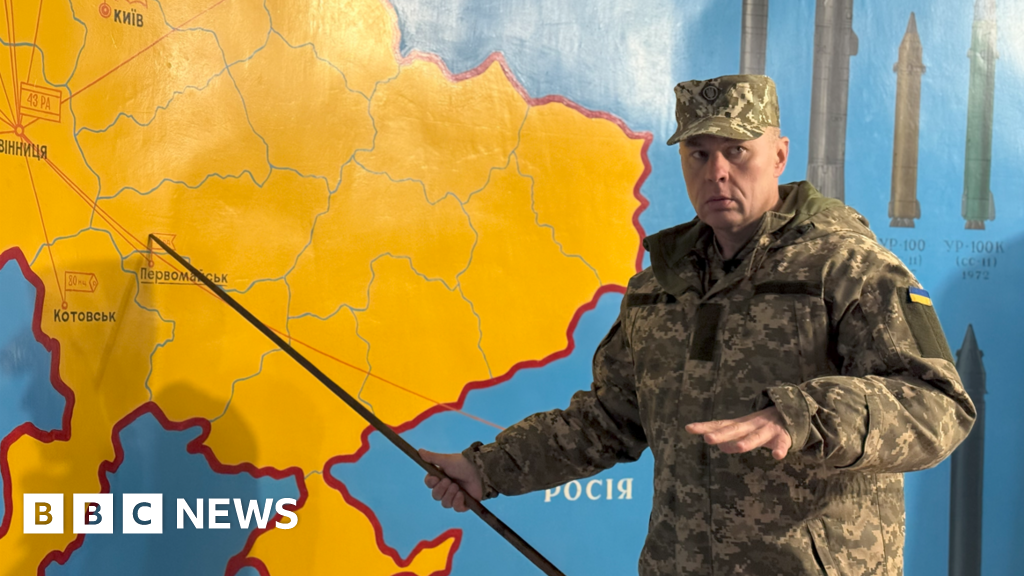Looking further ahead, some in Ukraine believe that a country serious about defense cannot rule out a return to nuclear weapons, especially if its most important ally, the United States, could prove unreliable in the near future.
Last month, officials denied reports that the Defense Department had leaked information that a simple nuclear device could be developed in months.
Now it is clearly not on the agenda, but the former Deputy Minister of Defense Alina Frolova says that the leak could not have been accidental.
“Obviously, this is an option that is being discussed in Ukraine, among experts,” she says.
“In case we see that we don’t have support and we lose this war and we have to protect our people … I think that could be an option.”
It is difficult to foresee the return of nuclear weapons to the snow-covered wastelands near Pershamaysk in the near future.
Only one of the base’s 30-meter-deep command bunkers remains intact, almost as it was when construction was completed in 1979.
It is a heavily fortified structure built to withstand a nuclear attack, with heavy steel doors and underground tunnels connecting it to the rest of the base.
In the tiny, cramped control room below, accessible by an even more cramped elevator, coded orders for the launch of intercontinental ballistic missiles were received, deciphered, and executed.
Former rocket technician Alexander Sushchenko shows how two operators turned a key and pressed a button (a gray one, not a red one) before playing a Hollywood-style video simulation of a large-scale global nuclear exchange.
It’s a bit comical, but also deeply sobering.
Getting rid of the largest ICBMs, says Alexander, clearly made sense. In the mid-1990s, America was no longer the enemy.
But Ukraine’s nuclear arsenal included various types of tactical weapons with a range of 100 to 1000 km.
“As it turned out, the enemy was much closer,” says Alexander.
“We could save several dozen tactical warheads. This would be a guarantee of the security of our country.”

